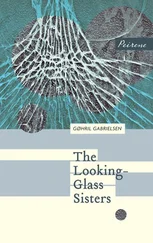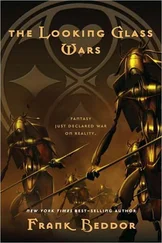The Despised Mother
Black Africa’s works of art, the fruits of collective creation by nobody and everybody, are rarely exhibited on an equal footing with those of artists considered worthy of the name. The booty of colonial pillage can sometimes be found in a few museums and art galleries or in private collections in Europe and the United States, but its “natural” place is in the anthropology museum. Reduced to handicrafts or folklore, African art is dealt with only as one of several customs of exotic peoples.
The centers of so-called civilization, accustomed as they are to acting as creditors for the rest of the world, have no great interest in acknowledging their debts. Yet anyone who has eyes to see and admire might wonder what would have happened to twentieth-century art without the black contribution? Without the African mother from whom they nursed, would the most famous paintings and sculptures of our times have been possible? On page after page in a revealing book published by New York’s Museum of Modern Art, William Rubin and other experts document the debt that the art we call art owes to the art of peoples we call “primitive.”
The principal figures of contemporary painting and sculpture were nourished by African art, and some of them copied it without even a thank-you. The greatest artistic genius of the twentieth century, Pablo Picasso, always worked surrounded by African masks and weavings, and their influence is evident in the many marvels he left. The painting that gave rise to Cubism, Les Demoiselles d’Avignon (the ladies of the red-light district of Barcelona), offers one of many examples. The most famous face in it, the one that breaks most strikingly with traditional symmetry, is an exact reproduction of a mask from the Congo, representing a face deformed by syphilis, that hangs in the Royal Central African Museum in Belgium.
Certain carved heads by Amedeo Modigliani are twin sisters of masks from Mali and Nigeria. The hieroglyphic borders on traditional Mali weavings were the model for Paul Klee’s graphs. Some stylized carvings from the Congo or Kenya made before Alberto Giacometti was born could pass for Giacomettis in any museum. You could try to guess which is a Max Ernst oil of a man’s head and which is the Ivory Coast sculpture Head of a Knight in a private New York collection, but it wouldn’t be easy. Moonlight on a Breeze by Alexander Calder contains a face that is a clone of a Luba mask from Congo displayed in the Seattle Art Museum.

Justice is like a snake: it only bites the barefooted.
— MONSIGNOR OSCAR ARNULFO ROMERO, ARCHBISHOP OF SAN SALVADOR, ASSASSINATED IN 1980
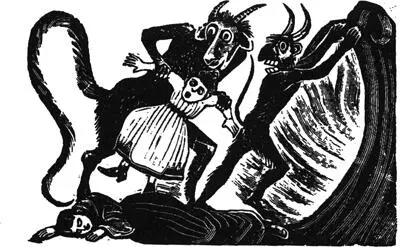
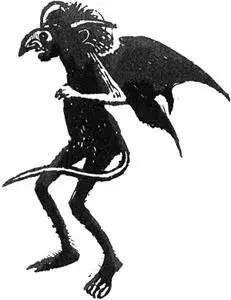
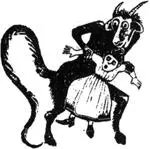
In a world that prefers security to justice, there is loud applause whenever justice is sacrificed on the altar of security. The rite takes place in the streets. Every time a criminal falls in a hail of bullets, society feels some relief from the disease that makes it tremble. The death of each lowlife has a pharmaceutical effect on those living the high life. The word “pharmacy” comes from pharmakos, the Greek name for humans sacrificed to the gods in times of crisis.
THE GREAT THREAT OF THE FIN DE SIÈCLE
At the end of 1982 a routine event occurred in Rio de Janeiro. The police killed a man suspected of robbery. The bullet entered the man’s back, as tends to happen when officers of the law kill in self-defense, and the case was filed away. In his report, the chief explained that the suspect was “a true social microbe,” who had been “absolved on this planet by his death.” The papers, radio, and TV in Brazil often use a vocabulary drawn from medicine and zoology to describe criminals: “virus,” “cancer,” “social infection,” “animals,” “predators,” “insects,” “wild beasts,” even “small beasts” when referring to children. These terms always allude to poor people. When criminals aren’t poor, the story leaps to the front page: “Young Mugger Killed Was Middle-Class,” went a Folha de São Paulo headline of October 25, 1995.
Not counting the many victims of gangs linked to the police, officially the São Paulo state police killed four people a day in 1992; by year’s end the total was four times the number killed by the military dictatorship that ruled Brazil for fifteen years. At the end of 1995, the Rio police were given a raise for “bravery and fearlessness.” That pay hike brought another sort of raise in its wake: the number of “alleged criminals” shot dead. “They aren’t citizens, they’re bandits,” explained General Nilton Cerqueira, once a star of the military dictatorship and now responsible for public security in Rio. He has always believed that, like good soldiers, good policemen shoot first and ask questions later.
After the earthquake of the Cuban Revolution of 1959, Latin America’s armed forces turned their attention from the traditional role of defending borders to “internal enemies”: guerrilla subversion and its many incubators. With the free world and democratic rule at stake, these militaries were inspired to do away with freedom and democracy. In just four years, between 1962 and 1966, there were nine coups d’état in Latin America. Following the doctrine of national security to a tee, the brass continued to overthrow civilian governments and massacre people for years thereafter. Time has passed, civilian rule has been reestablished. The enemy remains “internal” but isn’t what it used to be. Now the armed forces are taking up the fight against so-called common crime. Instead of the doctrine of national security, we have the hysteria of public security. Generally speaking, the officers don’t like it one bit that they’ve been demoted to mere policemen — but reality insists.
Global Fear
Those who work are afraid they’ll lose their jobs.
Those who don’t are afraid they’ll never find one.
Whoever doesn’t fear hunger is afraid of eating.
Drivers are afraid of walking and pedestrians are afraid of getting run over.
Democracy is afraid of remembering and language is afraid of speaking.
Civilians fear the military, the military fears a shortage of weapons, weapons fear a shortage of wars.
It is the time of fear.
Women’s fear of violent men and men’s fear of fearless women.
Fear of thieves, fear of the police.
Fear of doors without locks, of time without watches, of children without television; fear of night without sleeping pills and day without pills to wake up.
Fear of crowds, fear of solitude, fear of what was and what could be, fear of dying, fear of living.
About thirty years ago the establishment had enemies of all colors, from pale pink to fire-engine red. The work of chicken thieves and knife-carrying slum dwellers was of interest only to crime-page readers, devotees of cruelty, and experts in criminology. Today, “common crime” is a universal obsession, democratized and within the reach of all: many practice it, everyone suffers from it. Crime is the most potent source of inspiration for politicians and journalists who scream for an iron hand and the death penalty, and it gives certain military officers a golden opportunity to pursue civilian careers. Maybe the collective terror that identifies democracy with chaos and insecurity helps explain why some Latin American generals who only a few years ago were running bloody dictatorships have been so successful as politicians. General Ríos Montt, the exterminating angel of Guatemalan Indians, led the polls until his presidential candidacy was ruled illegal, and the same happened with General Oviedo in Paraguay. General Bussi, who killed suspects with one hand while with the other depositing the sweat of his brow in Swiss banks, was elected and reelected governor of the Argentine province of Tucumán. Another uniformed assassin, General Banzer, was rewarded with the presidency of Bolivia.
Читать дальше







